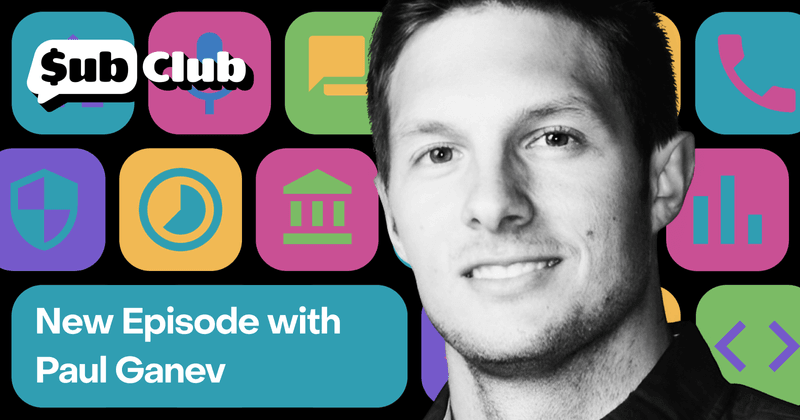“If you’re contemplating a freemium model, there’s going to be pain in the beginning” — Paul Ganev, Surfline
On the Sub Club podcast Surfline's Paul Ganev discusses why you should be calculating SAM not TAM and how to make freemium work.

When you think of surfing, a subscription app probably isn’t the first thing you think of — but maybe it should be. Surfline is a wave forecasting app that gives surfers up-to-date information on surfing conditions. Originally founded in 1985 as a 1-800 phone number, Surfline was a pioneer in consumer subscriptions, launching a web offering in 2001 (before even Netflix did!). In the last 38 years, they’ve learned a lot about what it takes for a niche app business to succeed.
When TAM is helpful… and when it isn’t
According to Paul Ganev [LinkedIn], VP of Strategy, Business Development, and Analytics at Surfline, setting your business goals based on the total addressable market (TAM) for your industry can be a big mistake. As Paul points out, “When you start digging in, you find out that… our product isn’t going to service all 100 million of these people. It’s going to service some fraction because there are other variables that I’ve omitted. And so it’s really important to figure out what the serviceable addressable market (SAM) is.” That’s not to say you shouldn’t ever calculate TAM. Paul says you should determine the delta between your SAM and TAM and continue to iterate on your product and strategy to close the gap over time.
📚 Further reading: Learn more about TAM SAM SOM
The right pricing formula
Pricing is especially important for a niche app like Surfline. With a finite number of surfers and coastlines in the world, the business opportunity isn’t unlimited. According to Paul, there are three factors you need to understand to hit the sweet spot when pricing a niche app. First, purchasing power: what can your target demographic afford to spend on a subscription? Second, commitment: how passionate are your users about your industry? Finally, your value proposition: how well does your product fit your target user’s needs? When you take all that into account, you should come up with a number that is both affordable for highly motivated users and brings in enough revenue that you can keep building and iterating on your offering.
Keeping the “free” in freemium
What about users who don’t want to purchase a subscription right now? According to Paul, one of the best things you can do is keep providing a great free experience for them. Not only do free users spread the word about your app, but Paul says they also might convert to paid users in the long run. “[At Surfline], we don’t spend any money on paid acquisition. We have this great growth funnel where we’re organically getting people into the free user experience… we educate them, habituate them. And then there’s some cohort of surfers that get very committed and love the product and end up subscribing.”
Optimizing revenue streams in a freemium app
Once you’ve modeled your business opportunity and found the right pricing structure, there are a couple of ways to optimize a freemium app business. As Paul points out, some portion of free users will never convert — but that doesn’t mean those users can’t bring in revenue for your business. To monetize free users, consider displaying unskippable ads in front of your paywall.
To increase revenue from paid subscribers, you don’t necessarily have to raise subscription prices. Consider partnering with other brands in your industry to offer premium users exclusive perks and deals. While this is technically a form of advertising behind your paywall, if done well, it’s a tasteful way of giving users even more value and increasing average revenue per user (ARPU).
You might also like
- Blog post
The creative testing system that slashed our CAC (and scaled our spend)
We scaled Meta ad spend by 74.6% and dropped CAC 40%. Here’s how.
- Blog post
Building a lovable alien and a $1M ARR AI app
Ajay Mehta explains how smart monetization and standout characters helped Tolan cut through the AI hype.
- Blog post
Why Your Apple Search Ads Attribution Is About to Spike—And What It Actually Means
How view-through attribution impacts your acquisition analytics

